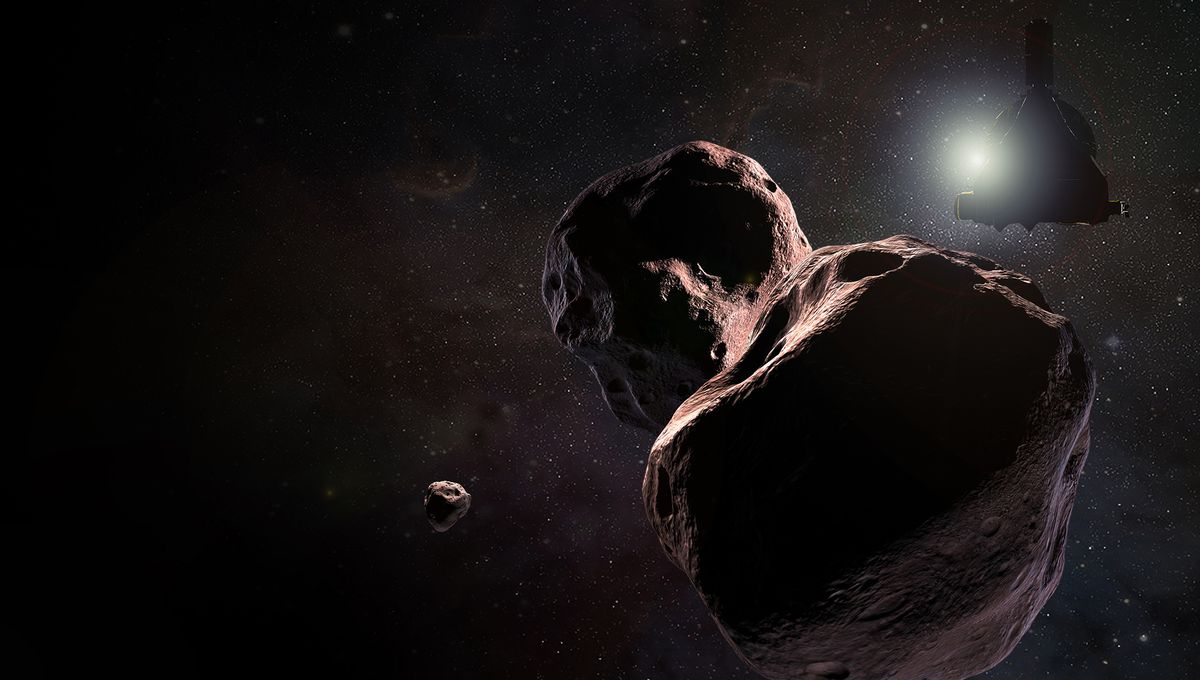
A team of astronomers believe they have detected objects moving far beyond the Kuiper belt, suggesting a possible second asteroid belt within our Solar System. The team has presented the findings at the 54th Lunar and Planetary Science Conference and is assembling a paper, but the work has not yet been peer-reviewed.
NASA probe New Horizons has gone a long way since it was launched in 2006, traveling around 56 Astronomical Units (AU) from the Earth, with one AU being the distance between the Earth and the Sun. It hasn’t yet left the Solar System like Voyager 1 and 2 but has made its way through the Kuiper belt, exploring the most distant world to date.
The probe should have left the Kuiper belt, the disc of objects that extends from around 30 AU to 50 AU. However, dust collectors on the probe – left active while in hibernation – found something odd. Beyond 50 AU, there hasn’t been a drop-off in the amount of dust detected.
“The number of impacts is not declining,” Alan Stern, a planetary scientist at the Southwest Research Institute, told Science. “And the simplest explanation for that is that there is more stuff out there that we haven’t detected.”
This could mean that the Kuiper belt extends beyond where we thought or, given the drop-off in objects observed after 50 AU, there is a second belt that begins further out. While looking for more objects for New Horizons to explore using ground-based telescopes, Stern and the New Horizons team found a dozen of them, far further out than they were expecting.
“The search results from our 2020 and 2021 observations have detected an increase in density of objects at distances d~80 au, compared to the nearly empty region beyond the outer edge of the Kuiper Belt at d~50,” the team wrote in a piece presented to the Lunar and Planetary Science Conference earlier this year. “This tentative result seems to betray the presence of a hitherto undetected and possibly massive population of planetesimals beyond the known Kuiper Belt. “
To make the detection, the team used stacks of images taken of the area, aligned so that “stationary” objects align. This allows you to see any moving objects, say, as they dip the light of a star they pass in front of. It’s an incredibly laborious process, but by surveying a large enough area you could estimate how many objects are in that region of sky. The team sped up the process using AI, saving them from examining 15,000 candidates a night, tracking the movement of 12 objects moving through space.
Though exciting, the work has not yet been peer-reviewed, and the team describes the discovery as “tentative”.
“Future ground– and space–based surveys,” the team concludes, “…will be able to confirm this exciting new result.”
The paper was presented to the 54th Lunar and Planetary Science Conference 2023.
[H/T: Science]
Source Link: Objects Detected Moving Beyond The Kuiper Belt Hint At Second Asteroid Belt